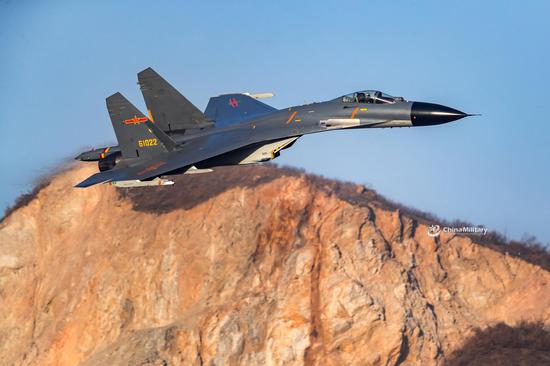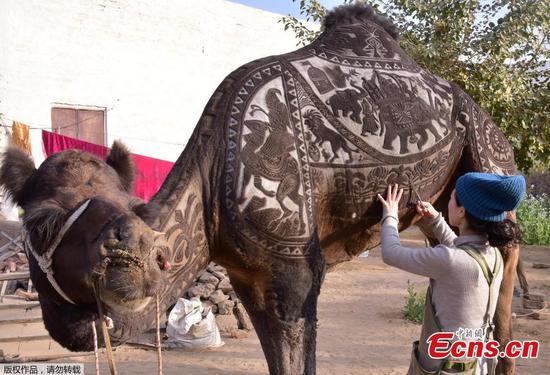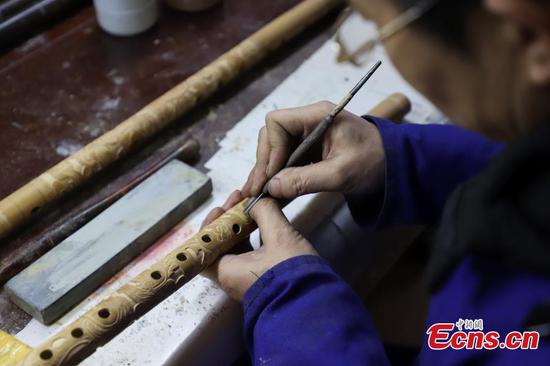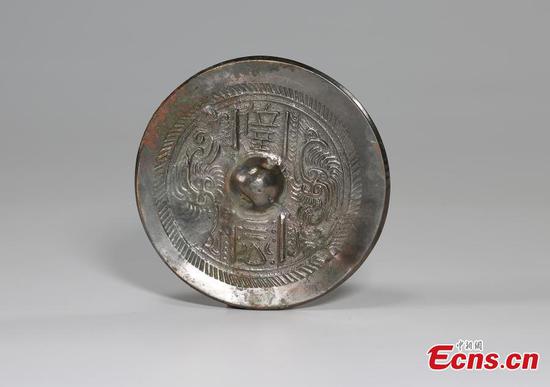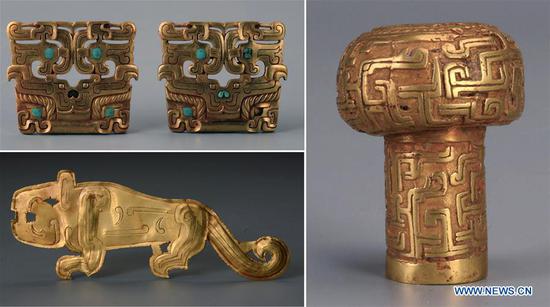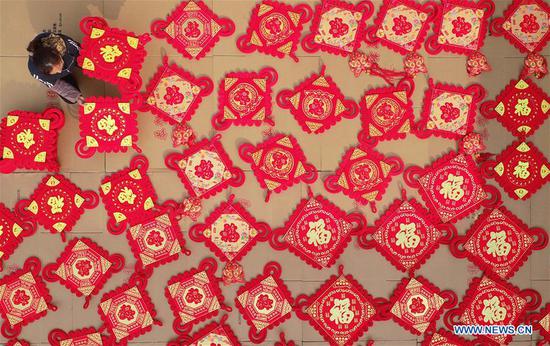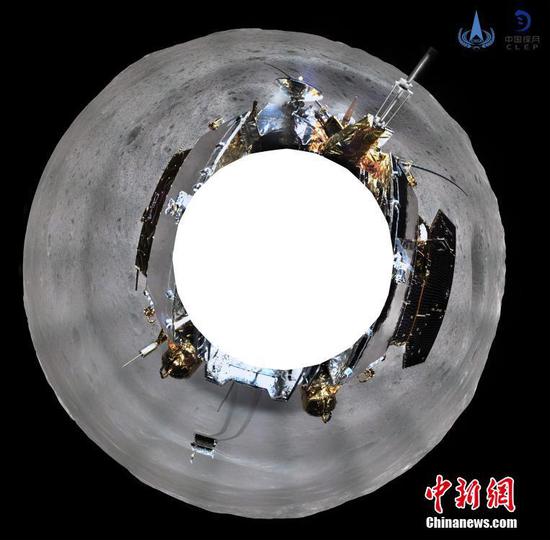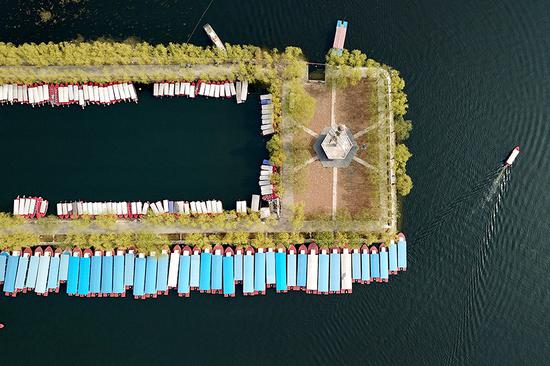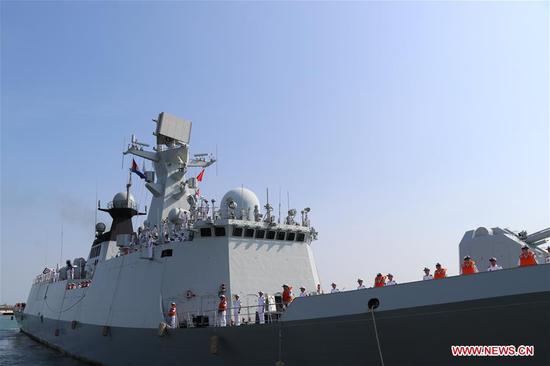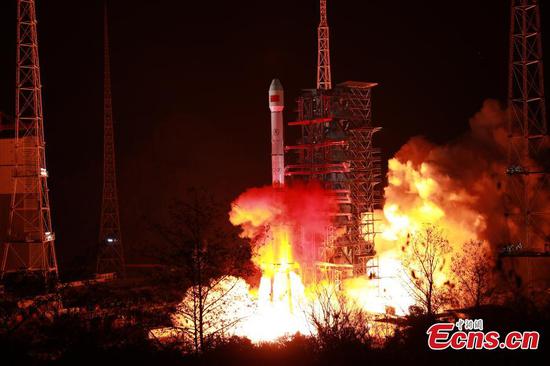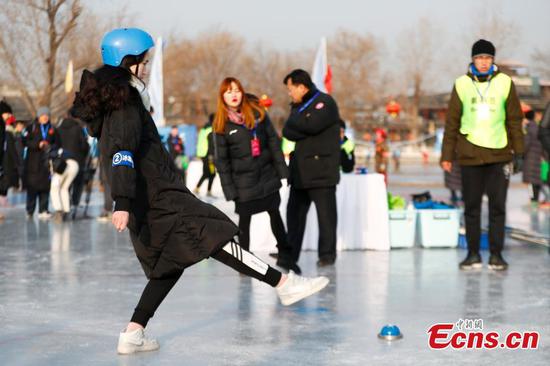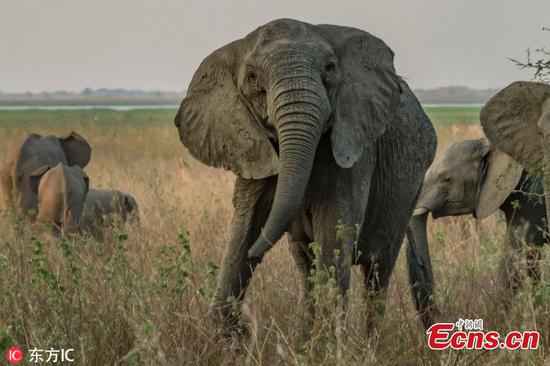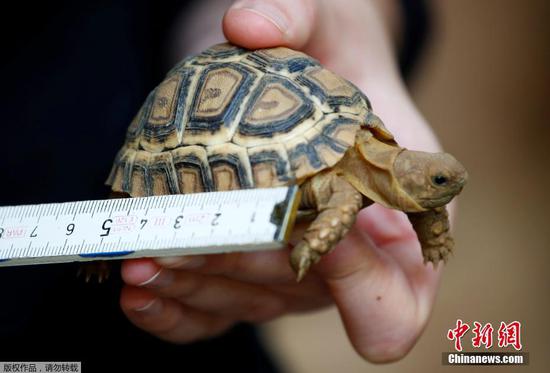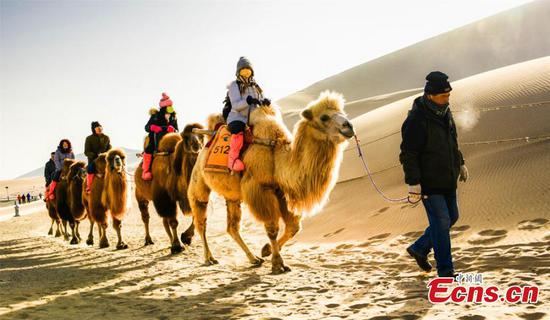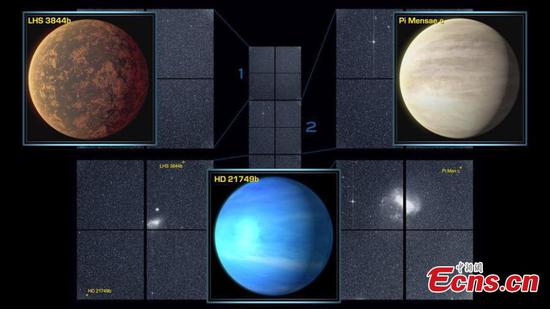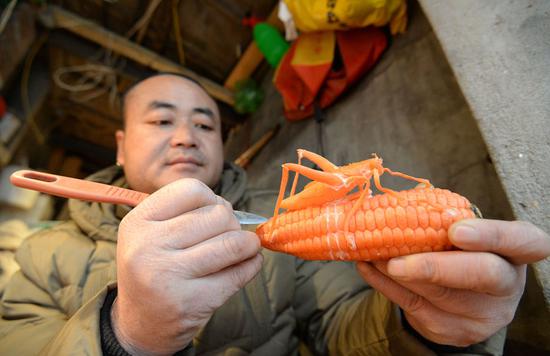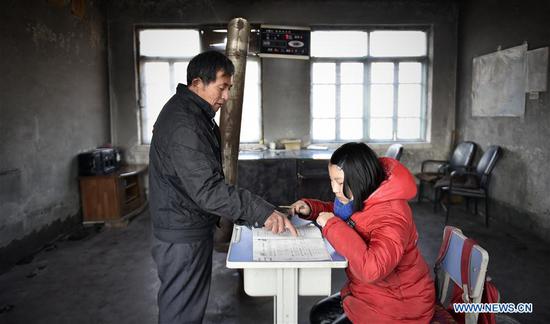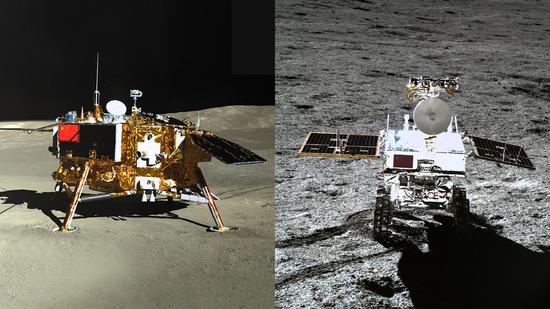
China's Chang'e-4 probe and its rover Yutu-2, took photos of each other on Friday, marking a successful mission to the far side of the moon.
Chang'e-4 probe touched down at the preselected landing area at 177.6 degrees east longitude and 45.5 degrees south latitude in the Von Karman Crater in the South Pole-Aitken (SPA) Basin on the far side of the moon on January 3, and the rover drove onto the lunar surface late that night.
The scientific instruments aboard the probe worked well, and the images taken by the probe and the detection data have been sent back to ground control, said the China National Space Administration (CNSA).
At 4:47 p.m. BJT on Friday, the images of the lander and the rover appeared on a large screen at the Beijing Aerospace Control Center, showing the Chinese national flag on both the lander and the rover with the desolate landscape dotted with craters on the far side of the moon as the background.
A congratulations note from Chinese authorities was delivered by Chinese Vice Premier Liu He at the Beijing Aerospace Control Center after the successful photos were sent back.
“The Chang'e-4 mission is the first of the fourth phase of China's lunar exploration mission, and it's the first time in human history that a spacecraft realized soft-landing and toured the far side of the moon. The mission also achieved the first relay communication from the far side of the moon to the Earth,” said the note.
Named after Chinese moon goddess "Chang'e," China's lunar exploration program, which began in 2004, includes orbiting and landing on the moon and bringing samples back to Earth.
The program has achieved five consecutive accomplishments, said CNSA, referring to Chang'e-1, Chang'e-2, Chang'e-3, a test craft for Chang'e-5 and Chang'e-4.










